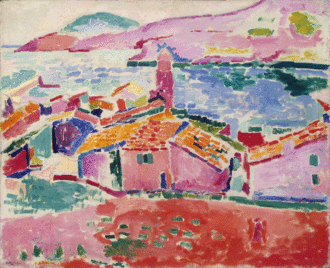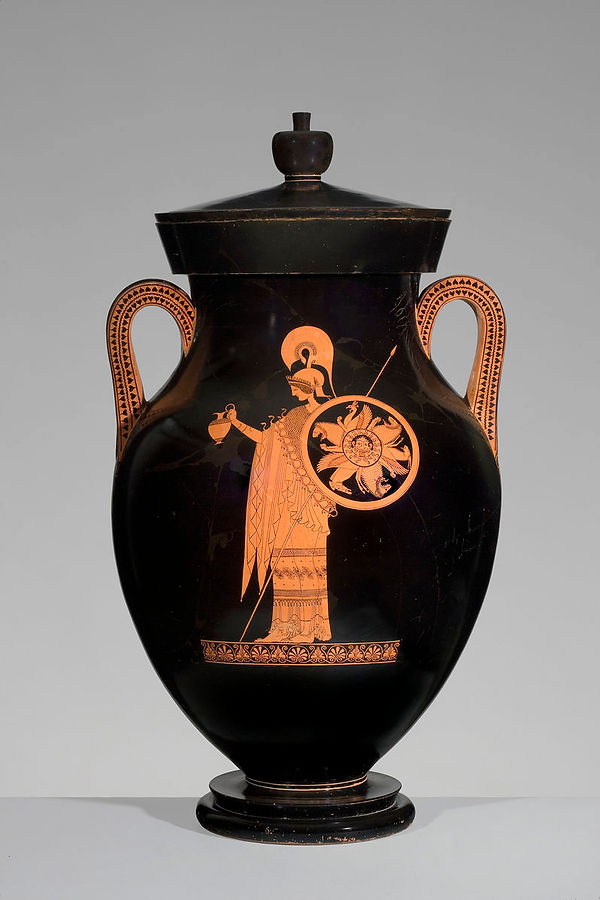<A>
Titian (esoteric):
His ground breaking art includes eroticism. Christian attitudes cast doubt on the value of sex & the human body; Christian emphasis on chastity & celibacy discouraged depictions of nakedness. The interest & elevation of Classical culture in the Renaissance restored the male nude to art. It is introduced by Donatello’s statue of the Biblical hero David (a symbol for the Republic of Florence) in the 1440s, the first freestanding nude since antiquity (predating Michelangelo by half a century). It was Botticelli who paints the first female nude, the Birth of Venus (1486), grounded on the classical Venus de' Medici sculpture; the theme is clearly derived from Antiquity. The Dresden Venus (1510) is also based on classical models, showed a reclining female nude in a landscape. Although attributed to Giorgione, his close associate Titian completed the work. In 1538 Titian produced his Venus of Urbino, using a similar pose. However Titian has moved Venus into an indoor setting, engaging her with the viewer, making her sensuality explicit. There are no classical or allegorical trappings; the woman displays none of the attributes of the goddess she is supposed to represent. The painting is sensual & unapologetically erotic. It was probably a portrait of a courtesan, perhaps Zaffetta, mistress of Ippolito de' Medici (a most reluctant 21 year old cardinal) who was the patron. This is not a subject a Christian congregation of the 16th century would have appreciated. Female beauty (aside from nudity) is also found in his belle donne half-length female figures from the mid-1510s. The erotic under current is far less visible than Urbino. This series of works includes Salome with the Head of John the Baptist, Lucretia and her Husband, Flora (Uffizi), the Woman with a Mirror (the Louvre), the Violante & Vanity (Munich). These have the appearance of portraits, and were often seen by contemporaries as portraits of leading Venetian courtesans. The next decade (the 1520s) saw Titian produce his 3 large & famous mythological scenes: The Bacchanal of the Andrians, the Worship of Venus, and Bacchus & Ariadne (1520–23). These constitute the most brilliant productions of the neo-pagan culture of the Renaissance. The patron was Alfonso d'Este in Ferrara. The subject matter would not have appealed to Italy at large.
left: Venus of Urbino centre: Salome with the Head of John the Baptist right: Bacchus & Ariadne



<B>
Modern painting (esoteric): *
The pre-war years were the Spring time for abstract art. From 1900 on, cultural connections between artists in major European cities had become extremely active as they strove to create an art form equal to the high aspirations of modernism. Ideas cross-fertilized through artist's books, exhibitions and manifestos. A plethora of sources were open to experimentation & discussion, forming a growing base for ever greater diversity in abstraction. Fauvism in Paris (les Fauves or "the wild beasts") emerged in 1904; these artists emphasized painterly qualities and strong colour over the representational or realistic values retained by Impressionism. Picasso gave birth to Cubism (borrowing Cézanne’s idea that all nature can be reduced to three solids: cube, sphere and cone), a hugely influential movement. With the painting Les Demoiselles d'Avignon (1907), he dramatically created a new and radical picture depicting a raw and primitive brothel scene with five prostitutes, violently painted women, reminiscent of African tribal masks and his own new Cubist inventions. In 1906 Kupka exhibited for the first time at the Salon d'Automne in Paris. He was deeply impressed by the first Futurist Manifesto, published in 1909 in Le Figaro. His 1909 painting Piano Keyboard/Lake marked a break in his representational style. His work became increasingly abstract around 1910–11, reflecting his theories of motion, colour, and the relationship between music and painting (orphism). From 1909 to 1913 many experimental works in search for 'pure art' emerged.
Illustrations below are all Kandinsky:
left: Blue Rider-1903 centre:: Munich-Schwabing with the Church of St. Ursula -1908 right: Landscape with Factory Chimney -1910



left: Matisse (Fauvism)- The roofs of Collioure -1905 centre- Picasso (Cubism) Les Demoiselles d'Avignon, 1907 right: Kupka Piano Keyboard/Lake, 1909



<C>
Egyptian art (superposed ranks): *
Optical perspective was not imposed in Egyptian art. Egyptian art was designed to achieve an eternal & harmonious existence. Therefore it is not interested in partial views of objects. Egyptian canonical art had to create and project into eternity a version of reality out of which all evil had been meticulously edited. To achieve their careful edition of reality, they avoided a single perspective (a room seen from one corner); instead they adopted the most characteristic aspect of each element, building up a composite aspective image. Its great triumph lies in the consistency of proportions. Over 500 years, from 3100 to 2600 BC, artists developed a harmonious canon of proportions, controlling the angle of view, and the size of each part in relation to the whole. The human body offers a distinctive test for a visual representation of the world & demonstrates the deconstructive-reconstructive procedure underlying Egyptian formal art. It was an extremely conservative culture. There are no artists in Egypt. Their ideal is to copy the sculptures that were originally made by the god Ptah, who invented the sculpture. Object size is not determined by perspective (e.g. the closer it is to the viewer the larger it is) but by their hieratic scale, which uses size to denote importance. Kings are shown bigger than everyone, even queens, except for gods. Faustian optical perspective plays no role in their artwork. Their statues and artworks depict figures as static. This was an intentional design. Without motion, they can exist outside the realm of time. Without time they are changeless. The Egyptians idealized timelessness and there art was to last forever (so far so good).
Illustration:
The Weighing of the Heart from the Book of the Dead of Ani. At left, Ani and his wife Tutu enter the assemblage of gods. At center, Anubis weighs Ani's heart against the feather of Maat. At right, the monster Ammut, who will devour Ani's soul if he is unworthy, awaits the verdict, while the god Thoth prepares to record it. On top, gods are acting as judges

<D>
Apollonian art (avoidance of space): *
the Berlin Painter, Attic (500-460 B.C).Red-figure Amphora depicting Athena 500 BC

<E>
Polygnotus's frescoes (Lesche of the Cnidians): *
below:Reconstructions of the visit to Hades by Odysseus

below: reconstruction of the taking of Troy
